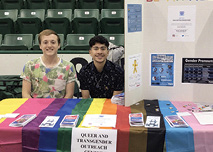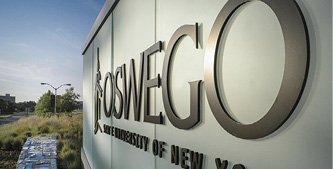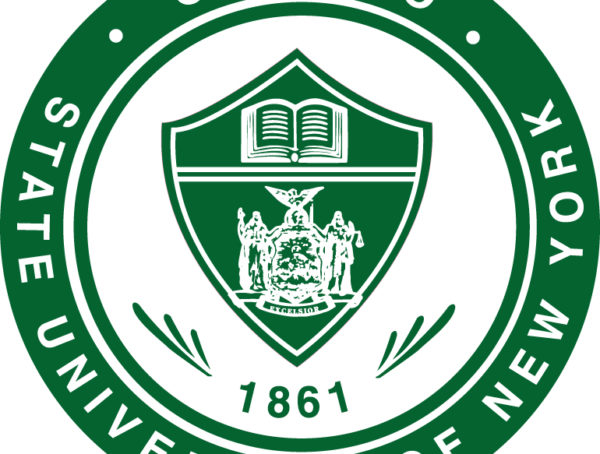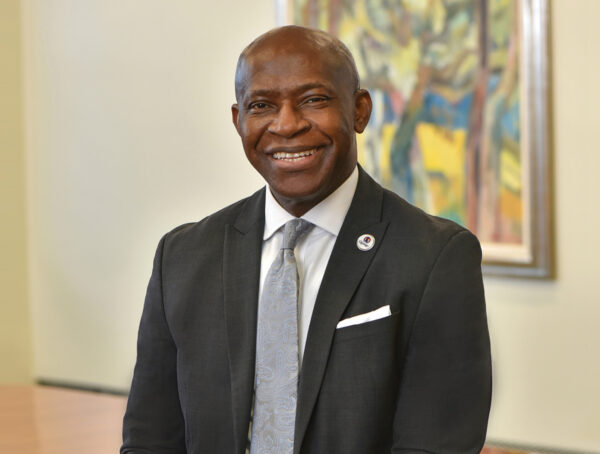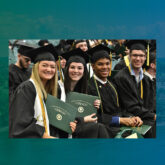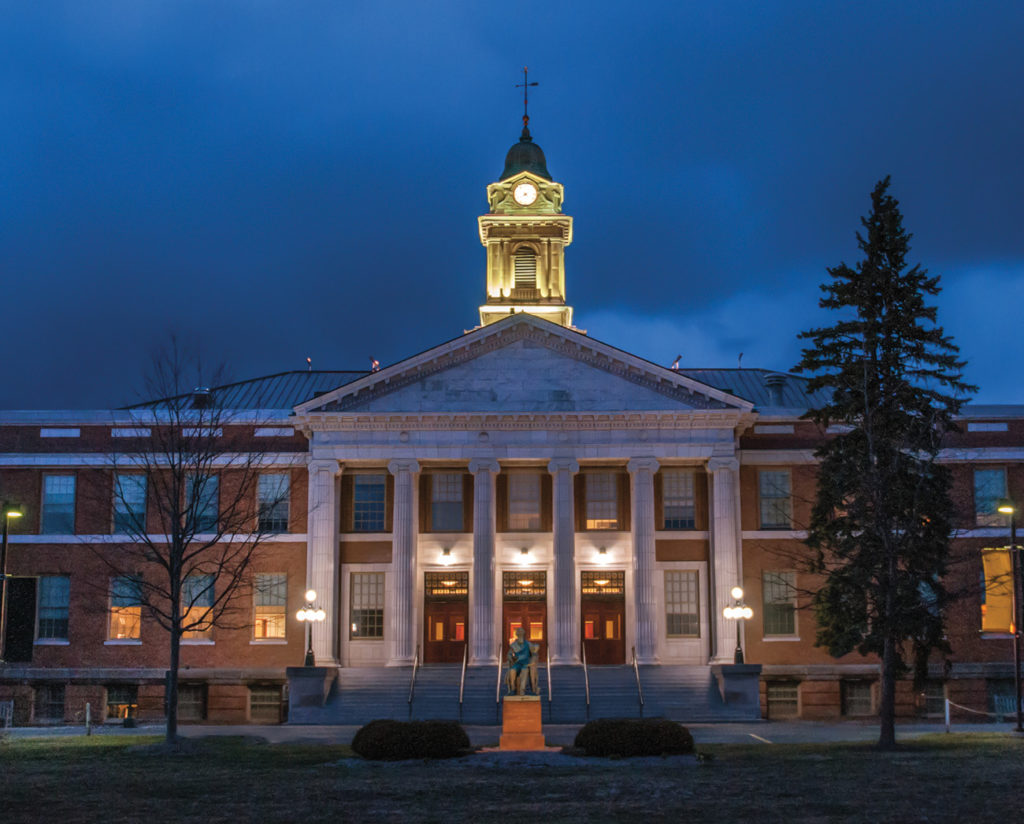
Founding the Future for Oswego ~
For 44 years, Deborah F. Stanley shared her passion for learning and her belief in higher education’s transformational power for students and society, as a member of the SUNY Oswego family.
In 1995, she began her long tenure as college president—second in length only to college founder Edward Austin Sheldon. During the past 26 years, she fortified the institution on several fronts, including:
- elevating academic excellence,
- embedding a learner-centered philosophy,
- renewing the physical campus,
- building the college endowment through private philanthropy,
- leveraging external connections in mutually beneficial partnerships and
- establishing a caring and inclusive culture.
In a time when the average tenure of a college president is 6½ years, SUNY Oswego has been incredibly fortunate to have had President Stanley at the helm for more than a quarter of a century. Her impact on this campus goes beyond continuing Oswego’s long history of providing access and opportunity; she, in fact, has founded the future for SUNY Oswego.
Quoting Sheldon, she not only raised the college to “its highest degree of usefulness,” Deborah F. Stanley has left a legacy of empowerment, resiliency, inclusivity, relevancy and resources whose impact will ripple through generations of Lakers yet to arrive on our lakeshore campus.
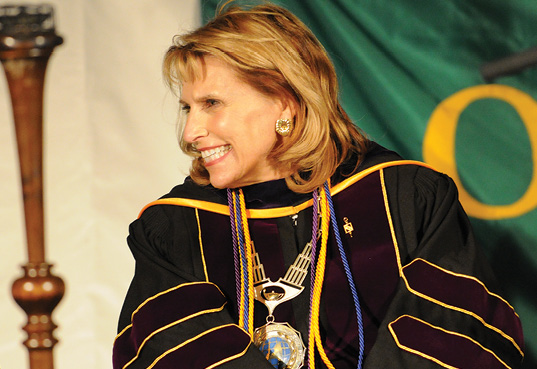
“We will meet the 21st century poised as a standard bearer of excellence, the epitome of a college faithfully committed to having our students take their place among the best educated in the world. Why would we undertake less? We have been forging this path all along. Your efforts from across this college have converged to define this destiny.”
—President Deborah F. Stanley, 1996 Better Than We Dared Believe
Academic Excellence
In 1995, at a time when New York state had fewer high school graduates, the public sentiment was critical of higher education and SUNY campuses were increasing enrollments to help balance their decreasing budgets, Deborah F. Stanley accepted the responsibility to lead SUNY Oswego. She supported the college as it made the strategic decision to accept fewer students, become more selective and build the student profile.
“There is an element of risk in the path we have chosen; decreasing bids is certainly not a choice most other institutions are making at this time,” President Stanley said in her August 1995 Fall Opening remarks to faculty and staff. “Clearly, we are at a crossroads for higher education and we have no choice but to shoulder the great responsibility to maintain the quality and vitality of SUNY Oswego: not just in the short run, but for the next generation.”
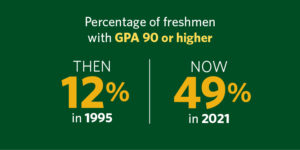 The calculated risk paid off. During her 26-year tenure, the average high school GPA of an incoming SUNY Oswego student rose more than 5 percentage points, the increase in the percentage of freshmen with a high-school GPA of 95 or higher rose 22 points and the percentage of students with a GPA of 90 or higher increased 37 percentage points.
The calculated risk paid off. During her 26-year tenure, the average high school GPA of an incoming SUNY Oswego student rose more than 5 percentage points, the increase in the percentage of freshmen with a high-school GPA of 95 or higher rose 22 points and the percentage of students with a GPA of 90 or higher increased 37 percentage points.
In 1996, President Stanley initiated the Presidential Scholars program, using private funds raised from the Oswego Fall Classic, to help recruit the best and brightest students to enroll at SUNY Oswego by offering a generous scholarship to the top 10 percent of their high school graduating class. She worked with faculty and staff to develop a program to support first-year students to succeed academically and personally in the college environment.
She oversaw the development of four strategic plans to guide SUNY Oswego to unprecedented success as a highly regarded academic institution for students from all backgrounds with grand aspirations to change the world.
Additionally, President Stanley has overseen substantial growth in the number of full-time faculty over the past decade. As a former faculty member and provost, she has always valued the role our faculty plays in the academy and igniting the passion for learning in our students.
The student-faculty ratio dropped from 20-to-1 in 1995, to 16-to-1 in 2020, and the percentage of small classes (with 20 or fewer students) rose from 35 percent in 1995, to 56 percent in the 2021-22 academic year. That translates to more individualized attention for every student,
and more opportunities for students to develop deeper connections to their faculty members as well as the subject they are exploring.
SUNY Oswego has been a leader within the SUNY system and among peer schools in developing new and innovative academic programs, such as becoming one of the first to offer some online courses and degrees, including the highly ranked online MBA. In fact, two of the majors with the largest number of graduates today—wellness management and human development—didn’t even exist in 1995, and several of the fastest growing majors, including finance, graphic design, human-computer interaction, software engineering, and electric and computer engineering, graduated their first classes during President Stanley’s tenure.
The college developed these new programs to produce graduates who have the skills employers seek and the tools to address society’s emerging challenges. So, despite the unique challenges posed by the COVID-19 pandemic, 97 percent of 2020 graduates were in graduate school or working full-time, 84 percent in their chosen field of study. The success of our graduates and our academic excellence have led to several national and international accreditations for the college and its programs.
The exceptional quality and rigor of our academic programs have propelled SUNY Oswego in numerous college rankings and garnered several distinctions for our students and graduates, including being named a top producer of the prestigious Fulbright U.S. Student award-winners.
While all of these academic accomplishments help to elevate the reputation of the college, President Stanley has always stressed the importance of the college mission to provide access and opportunity for students who are committed to earning a college degree.
“I don’t think the institution should ever judge itself by the grade point average or the SAT scores or the achievements of the students who come in,” President Stanley said. “We want to know that we have added value along the way, that we have enhanced our students’ desire to be lifelong learners, to excel, to achieve and to share their knowledge for the betterment of society.”
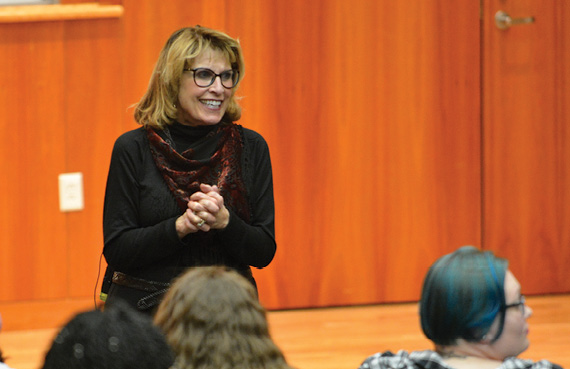
“We have been careful to preserve SUNY Oswego’s mission as a place of learning where the academic endeavor is at the heart of all we do.”
—President Deborah F. Stanley, 1996 Better Than We Dared Believe
Learner-Centeredness
Long before “student-centered learning” became a catchphrase in higher education, President Stanley and the SUNY Oswego campus in the 1990s were re-examining the institution and putting students at the core of everything the campus does.
“Students to me are the driving force,” President Stanley said. “Learner-centeredness became the concept by which we renovated the programs of the institution and the physical spaces. It is the lens we use to direct our decision-making and resource-allocation. How does this affect the student experience today and how will it deepen their learning for tomorrow?”
One of the first programs President Stanley initiated was the Oswego Guarantee. The original promise in 1995 committed to maintain stable costs for room, board and tuition; provide access to courses needed for on-time graduation; and keep class size small for more individualized attention. In 2013, the college added the $300 Oswego Graduation Return on Investment for students who complete their four-year degrees on time.
 In December 2020, President Stanley announced the Laker Success Package to step up efforts to support students and their families who were facing unexpected challenges due to the COVID-19 pandemic. The package included Imagine 2021, a robust virtual career development program that brought together alumni, employers, guest speakers and students for career exploration, skill building and professional networking. It also expanded the college’s Alumni Sharing Knowledge program to guarantee an alumni mentor to every student who desires one. President Stanley also spearheaded a variety of programs, including Upskilling in a Digital World, to connect students with alumni who shared invaluable insights about skills needed in today’s workplaces.
In December 2020, President Stanley announced the Laker Success Package to step up efforts to support students and their families who were facing unexpected challenges due to the COVID-19 pandemic. The package included Imagine 2021, a robust virtual career development program that brought together alumni, employers, guest speakers and students for career exploration, skill building and professional networking. It also expanded the college’s Alumni Sharing Knowledge program to guarantee an alumni mentor to every student who desires one. President Stanley also spearheaded a variety of programs, including Upskilling in a Digital World, to connect students with alumni who shared invaluable insights about skills needed in today’s workplaces.
President Stanley also worked to ensure that the college met students where they were. That led to the establishment of the Syracuse Branch Campus, which enabled Syracuse-area residents to complete in-demand degree and certificate programs. SUNY Oswego was also among the first SUNY colleges to develop online degree programs, including the top-ranked online MBA. Oswego faculty developed courses for Open SUNY, a systemwide initiative to provide students with maximum flexibility and access courses and degree programs across SUNY institutions. The college also customized academic programs for working professionals, including an innovative MBA program for SRC Inc. employees that was delivered on-site at the company’s North Syracuse headquarters.
Throughout President Stanley’s tenure, the college invested in resources to support student success. She encouraged the college to adopt new technologies, such as the Starfish Early Alert System that identifies struggling students and connects them to additional resources, improving their chances for success. Through the Start Now program, the college also keeps alive the dream of a SUNY Oswego education for students who initially may have been denied admission. The program connects students to additional resources and coursework at partner SUNY community colleges until they are ready to transfer into SUNY Oswego, earning both an associate’s and bachelor’s degree in the process. These programs assist and empower students to meet challenges head on and overcome obstacles on their journey toward a college degree.
Over the past 26 years, the college has invested in student advisement, counseling and mental health programs to support the total well-being and success of our students inside and outside of the classroom. In addition to the establishment of formal programs or student support offices, the college community came together to implement the informal Ask Oz pop-up Student Support Center as a one-stop shop to help students with whatever questions or issues that they may have. The President’s Town Hall meetings gave students direct access to the key campus leaders who listened to and addressed student concerns.
A hallmark of SUNY Oswego has always been hands-on learning, and this continued to flourish under President Stanley’s leadership. Programs such as the student-run Dr. Lewis B. O’Donnell Media Summit, Festa Fellows leadership program, the Oswego Reading Initiative and the Grand Challenges projects are just a few examples of how the college helps students integrate and apply their knowledge in real-world situations.
“When I became president, I was very interested in what was being written about student-centered learning,” President Stanley said. “An important element of the concept was students feeling that someone was taking a personal interest in them. What we saw was that students started to achieve at different levels and they learned more, and what they learned became embedded for them in deeper learning. I’m very proud of this institution and the progress that we have made. Learner-centeredness is a living, breathing concept for us.”

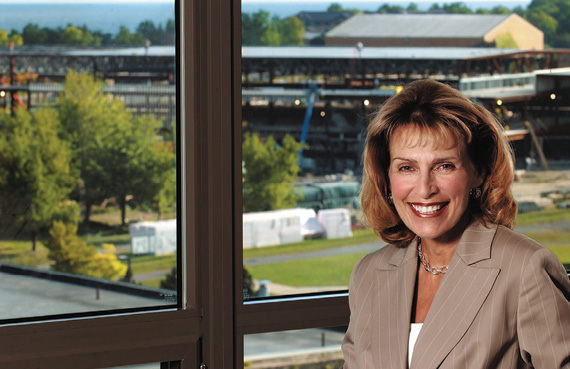
“We will conquer space at Oswego State! We will begin a multi-year initiative of refurbishing our campus.”
—President Deborah F. Stanley, 1996 Better Than We Dared Believe
Campus Renewal
Because of meticulous and consistent planning, SUNY Oswego has been exceptionally successful in securing state funding for our campus construction projects. President Stanley’s ambitious campus-wide renewal plan—now in its third decade—encompasses $1 billion in renovations and construction. Her impact will forever be felt on this campus as future generations of students, faculty and staff work, study and learn together.
President Stanley also responded to the changing needs of Oswego’s students and society. During her tenure, the world experienced a technological revolution with the internet becoming a driving force in all aspects of our lives.
“There was a time in the mid-90s when we were asking how we could incent faculty to use computerization and have computers on their desks,” President Stanley recalled. “We needn’t have worried about that, because time took care of that pretty quickly. The conversation quickly became how do we pay for the computers people want on their desks? We went from a $2 million a year every two years to a $10 million a year enterprise, and we had to renovate the campus.”
President Stanley oversaw the implementation of wireless technology throughout campus, including in the residence halls. Students arrived on campus with an expectation of fast, reliable internet connections for their laptops, phones, gaming consoles and other devices. The recent COVID-19 pandemic tested the college’s technological capabilities and proved that the college could work and deliver curriculum on campus and remotely.
In keeping with her commitment to student-centeredness, President Stanley and her leadership teams examined the physical campus. She recalls early in her presidency looking at an aerial map of the campus and taking a sticky note to what was then a parking lot in the center of campus. She marked the spot where she wanted to build a new student center. This new space would connect the eastern and western portions of campus; provide ample classrooms, an auditorium, student services, dining areas and space for student organizations; and offer a best-in-class centrally located arena for ice hockey, career fairs and most importantly, convocation ceremonies.
Through her persistence and commitment to that vision, the now Marano Campus Center opened in 2007, and is home to the recently named Deborah F. Stanley Arena and Convocation Hall (see related story).
“Among my most cherished memories is opening the ice arena and convocation center in 2007 and shortly thereafter, breaking down the wall to officially open the ’spine’ of the Marano Campus Center,” President Stanley said. “I wondered whether it would function the way we had envisioned. Would this be the connector for campus members that bustled with activity?
“By the end of the week, it was indeed alive with people—passing through as they crossed campus, eating in the hearth room, going to their classes, studying in the quiet spaces and chatting in the lounges. It was remarkable to see how the landscape of student life and activity on campus had changed.”
Guided by the Campus Concept Committee’s recommendations, the college has strategically deployed capital funds to support student success, academic program needs as well as emergent facility developments such as lactation stations and gender neutral bathrooms. These upgrades and renovations have a direct impact on the college’s ability to deliver the highest quality education to students in an inclusive and supportive environment.
In addition to the creation of the Marano Campus Center and equally impactful to students and the physical appearance of campus was the construction of the Richard S. Shineman Center for Science, Innovation and Engineering. The $118 million project provided a new 230,000-square-foot home for STEM majors, and also earned gold LEED certification for its environmentally friendly design, including the state’s largest geothermal well installation at the time.
The college also built The Village, a 68-unit, townhouse-style complex, just south of the Gimmerglass Lagoon. Featuring a full kitchen, furnished living room and laundry unit in each house and a large commons building for leisure and studying, the Village townhouse complex offered a plethora of luxuries that were not available in typical residence halls.
President Stanley capped off her tenure with one final transformative renovation project—an $80 million campus renovation project that is turning the former Hewitt Union into the nation’s premiere facility for its School of Communication, Media and the Arts, and home for the college’s renowned broadcasting; graphic design; and cinema and screen studies programs.
“There have been many physical changes on this campus during my tenure—the buildings that are no longer, the ones that have been fully renovated and the new ones that we conceived and built together,” she said.
She leaves the college with a strong blueprint for the future, including having laid the groundwork for a network of geothermal wells and a renewable microgrid to hopefully become carbon neutral by 2050.

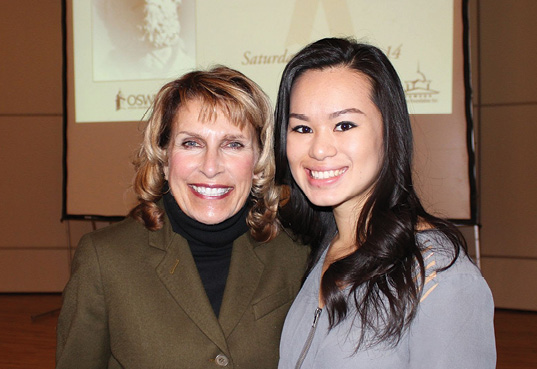
“We are redoubling our efforts to raise more scholarship funds to better support our students and their life goals, so we as a learning institution can deliver on our promise to society to develop an educated citizenry … who are lifelong learners committed to improving our world.”
— President Deborah F. Stanley, 2019 in announcing The Path Forward campaign
Successful Fundraising
When Deborah F. Stanley became interim president in 1995, New York state had tightened the budgets for SUNY campuses, and many SUNY schools turned to tuition revenue via larger enrollments to balance their budgets. But not SUNY Oswego.
Instead, President Stanley and college leadership decided to streamline programs and staffing where they could while making targeted investments that could pay dividends in the long-term future of the college.
Among her first efforts as president, she created the Presidential Scholars program to recruit and retain the highest achieving students, and assisted in raising funds for the program by participating in a range of philanthropic initiatives, including the annual Fall Classic Golf Tournament.
She also invested in professional staff, including the establishment of a senior level vice president position to work directly with and support the efforts of the volunteers on the Oswego College Foundation and the Oswego Alumni Association boards. She saw the benefit in leveraging the expertise and resources of the thousands of Laker alumni to maximize the college’s impact on students and in the world.
The strategy paid off. Over the past 26 years, she created a culture of philanthropy on the SUNY Oswego campus that has taken root and will continue to flourish well into the future. President Stanley oversaw the evolution of annual fundraising efforts into more sophisticated and effective multi-year campaigns, beginning with Inspiring Horizons, which surpassed the original goal by raising $24 million.
Guided by the institution’s commitment to student success and achievement, President Stanley launched the Possibility Scholars program, supported by a $5 million bequest, to attract strong students with financial need in New York state to study science, technology, engineering and mathematics, and give them an opportunity to apply their learning in hands-on, immersive experiences in international locations through the Global Laboratory program. (To recognize President Stanley’s leadership in this area, an alumna and her husband established the endowed Deborah F. Stanley Possibility Scholarship in October. See related story.)
President Stanley recognized the important role that teacher-scholars play in igniting the passion for learning in their students and worked to secure the college’s first three endowed professorships to attract, retain and support superior faculty talent. She also worked with donors to secure support for such hands-on learning opportunities as the Dr. Lewis B. O’Donnell Media Summit, the Student Investment Fund, the Cutler Public Justice Excellence Fund, excellence funds for several academic departments and Student-Faculty Collaborative Challenge grants. Several named lecture series bring to campus some of the greatest minds in the nation and the world.
President Stanley conceived of a second comprehensive campaign, With Passion and Purpose, which engaged more than 16,00 donors and raised $43.5 million. That included the college’s largest gift of $7.5 million from the Marano estate, which established the Marano Scholarships for first-generation college students.
Her impassioned plea via The Path Forward campaign in fall 2019 to raise more scholarship support for our neediest students led to the doubling of the number of need-based scholarships from 220 to 440 within two years—most of which coincided with a global pandemic—and, yet, was successful.
The pandemic also created unexpected challenges for many students, which led President Stanley and her leadership team to establish the Student Emergency Fund. The college raised more than $365,000 since March 2020 and made awards to hundreds of students to help them cover unanticipated expenses and remain enrolled in college.
Perhaps most significantly, her vision and leadership in private fundraising led to the growth of the college endowment by 3,250% from $1.7 million in 1997 to more than $60 million in 2021, resulting in more funding for students and helping elevate an Oswego education from good to great.
In recognition of her tremendous contributions, specifically her exceptional accomplishments as a fundraiser for the college, a group of donors, led by the Oswego College Foundation board, raised more than $2.4 million to name the Deborah F. Stanley Arena and Convocation Hall.
“It was extremely moving,” President Stanley said of the Oct. 1 naming unveiling. “To think about that being here in perpetuity is amazing to me. I am so grateful to these donors—many of whom were my students. That money will create an endowed fund that will enable the campus to keep up the unique equipment needs of this space. It’s incredible and humbling.”

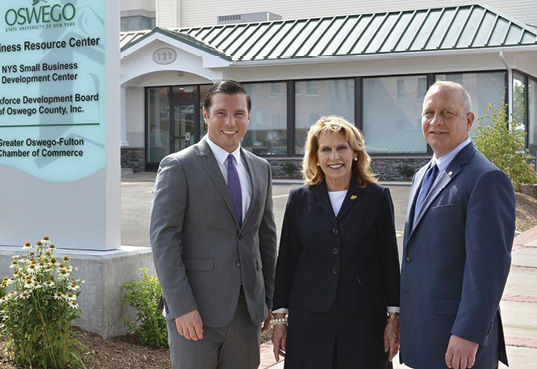
“Higher education’s traditional mission in preparing students and growing knowledge can more deliberately enhance the social and economic fiber of our communities when we align that mission with appropriate external partners.”
— President Deborah F. Stanley, 2013
Productive Partnerships
As a public institution, SUNY Oswego has always embraced our mission of contributing to the common good and being an educational resource that lifts all segments of the population.
President Stanley has encouraged all facets of the college to connect with local, regional, state and national entities to create mutually beneficial partnerships. Her own leadership on such organizations as the American Association of Colleges and Universities, American Council on Education’s (ACE) Commission on Leadership, CenterState Corporation for Economic Opportunity, Operation Oswego County, New York State Campus Compact and several SUNY system committees has elevated the reputation of SUNY Oswego. Through her involvement with these organizations, she has shared SUNY Oswego’s successes and brought back best practices to infuse into our own operations and offerings.
She was also a charter signatory of the American College and University Presidents’ Climate Commitment, and has used that public promise to guide all future construction on the SUNY Oswego campus. Fulfilling her commitment to reduce Oswego’s carbon footprint and to improve energy efficiency, all campus projects have since followed the Leadership in Energy and Environmental Design (LEED) construction system to earn certification by the U.S. Green Building Council.
With its 700-acre campus and 76 buildings, SUNY Oswego is a valuable resource for the region, and President Stanley initiated the “Cruisin’ the Campus” program to integrate and embed the college’s arts, athletics, recreation and many other offerings in the community by opening up campus resources, facilities and programs to area residents.
She also wanted to bring the college into the community. As a result of a unique public-private partnership between the college and Pathfinder Bank, the Business Resource Center opened in 2017 to offer a range of services to entrepreneurs, startups and established businesses at the hub of downtown Oswego’s east side. It also houses the college’s Office of Business and Community Relations, the Greater Oswego-Fulton Chamber of Commerce and the Workforce Development Board of Oswego County.
Similarly, the college promotes students’ involvement in life happening off campus, especially through volunteering. Students also commit thousands of hours of volunteer service to such initiatives as Adopt-A-Grandparent, youth mentor programs, literacy programs, tax preparation assistance and many others.
President Stanley supported service learning—an educational experience that enables students to apply their knowledge in a setting or on a project that can provide tangible benefits to a community business or organization. These unique, and often multidisciplinary learning experiences have repeatedly earned the college the prestigious Carnegie Community Engagement Classification and listing on the Presidential Higher Education Community Service Honor Roll.
 She encouraged the college to build pathways to new populations of students through articulation agreements and partnerships with community colleges, high schools and international organizations. These partnerships helped to diversify the college, support recruitment goals and create a more vibrant community of learners.
She encouraged the college to build pathways to new populations of students through articulation agreements and partnerships with community colleges, high schools and international organizations. These partnerships helped to diversify the college, support recruitment goals and create a more vibrant community of learners.
True to her student-centered philosophy, President Stanley has worked to connect the campus and our students to community resources. For example, the college worked with several agencies to turn its Veterans Lounge into a NYSID-designated Battle Buddy Center, and the college has a robust website for veterans that pulls together all college and community resources into one area. Such efforts have led to the college’s designation as a military friendly school and inclusion on best college for veterans listings.
Additionally, President Stanley co-chaired SUNY’s Mental Health Task Force to help develop recommendations on how the SUNY system can make a measurable difference in addressing the mental health needs of students. During her tenure, the college won a federal grant of nearly $280,000 over three years to strengthen the college’s crisis counseling capabilities. The college also created more direct pathways for students to community-based mental health resources so that students had round-the-clock access to support when they needed it.
While aware of the college’s role as an economic engine for the region, President Stanley also recognized the reciprocal nature of being a good neighbor. She helped develop a shared vision across our campus for building external partnerships and worked to ensure that the college enriched the lives of the community and external partners, and those same connections enhanced the educational experience and growth of our students and campus members.
![]()
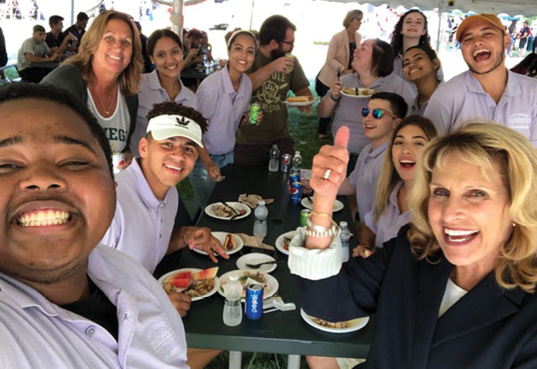
“It is also the time to move beyond celebrating diversity as our sole goal. The quality of a public institution of higher learning will also be measured by how well we forge and sustain a truly pluralistic community on campus.”
— President Deborah F. Stanley, 1996 Better Than We Dared Believe
Caring and Inclusive Culture
Walking in the annual ALANA Peace Walk. Cheering for Laker ice hockey teams during Whiteout Weekend. Dancing to Pharrell’s “Happy” in the worldwide #HappyDay Challenge.
Chatting with the student groups who are tabling in the Marano Campus Center. Participating in the ALS Ice Bucket Challenge. Watching a Del Sarte student dance recital or an Artswego performance.
Catching up with alumni and friends at the annual “Come As You Were” BBQ at Fallbrook during Reunion Weekend. Donating to The Fund for Oswego during a 24-hour giving challenge.
Coming together to share, mourn and comfort one another in times of civil unrest in the nation and after such disasters as the 9/11 attacks, Hurricane Katrina, and other violence and natural disasters. Establishing and following new protocols to protect the health of every community member.
Gathering for the Totally Teal Ovarian Cancer Awareness, It’s On Oz sexual and interpersonal violence prevention, Go Red for Women heart health awareness or annual Green and Gold Day campus photos.
The list goes on, but these are some of the day-to-day activities that build a caring, inclusive community.
In her 1996 remarks to faculty and staff, President Stanley said: “Our working network is also a living community of real people. Certainly, we leave our imprint as educators but also as human beings … We must lead our students by example. We know that the more productively engaged and affiliated the students are, the more dedicated they are to succeed at college. We also know that the more social interactions students have with faculty, the more motivated they are to learn.”
One of President Stanley’s greatest accomplishments at SUNY Oswego was creating a culture of caring and inclusion that values diversity and differences and fosters communication and understanding among all Lakers.
“It is in our interest to be inclusive because we are so intertwined in everything we do,” she said in 1996. “Difference in our participants can serve to make us less brittle, more creative and more resilient as a whole.”
Today, the college has never been more diverse in student demographics, academic programs and extracurricular offerings. President Stanley eliminated walls between disciplines, and encouraged multidisciplinary and interdisciplinary courses and research. She incentivized research that involves faculty and students—and even industry partners—working together.
She made sure that all stakeholders, most notably students, have a seat at the table to discuss goals, priorities and actions. Through shared governance, faculty, students, professional staff and administration work together in good faith to advance the college’s mission every day. A diverse group of employees, students and oftentimes alumni serve side-by-side on college committees, working groups and task forces to ensure that issues are addressed from a variety of perspectives.
“An organization is the interplay of people, not the hierarchy of people,” President Stanley said.
Particularly important to her was the inclusion of minority voices or those on the fringe of an issue. In fact, one of the key traits of any member of her leadership team was the ability to disagree with her or the prevailing thinking and defend their positions, even knowing that the decision could likely go the other way.
 President Stanley has continued, year-after-year, to guide the college to its most culturally diverse student body in SUNY Oswego’s history. At the start of the fall 2020 semester, 31% of the total undergraduate and graduate population, including a record-setting 38% of the first-year class self-identified as culturally diverse. (See related information.)
President Stanley has continued, year-after-year, to guide the college to its most culturally diverse student body in SUNY Oswego’s history. At the start of the fall 2020 semester, 31% of the total undergraduate and graduate population, including a record-setting 38% of the first-year class self-identified as culturally diverse. (See related information.)
During her tenure, the college hired our first-ever chief diversity and inclusion officer, and created the first-ever Strategic Diversity and Inclusion Plan. Launched in fall 2021, the Institute for Equity, Diversity, Inclusion and Transformative Practice will serve as the nexus of activity related to SUNY Oswego’s efforts to stand together to root out racism and enact positive change for our community.
“I’m enormously proud of the diversity that we’ve instilled and honor at this institution,” President Stanley said. “I think we do it the right way and I’m very proud of that.”
People on this campus go the extra mile to support each other and campus priorities. Whether it is organizing the longest conga line on ice or staffing eight separate commencement ceremonies to ensure our graduates can safely celebrate their graduation, President Stanley empowered people from across campus to work beyond their job descriptions or usual role to achieve more.
It is a culture that is tangible to those on campus. It has become known as The Oswego Way. Its roots trace back to President Stanley.
You might also like
More from Featured Content
Vision for the Future
VISION for the Future Peter O. Nwosu began his tenure as the 11th president of SUNY Oswego, building on the solid …
Envisioning the Potential in All Students
ENVISIONING the Potential in All Students Educator donates $2 million in recognition of his Oswego education, in support of future teachers Frank …
A Vision of Support
A VISION of Support Award-winning principal makes an impact on her school through her positivity and commitment When Nicole Knapp Ey ’02 …








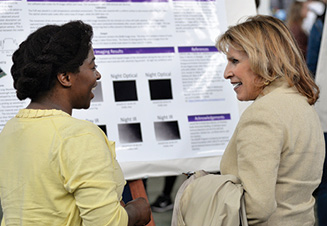
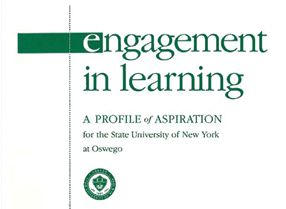

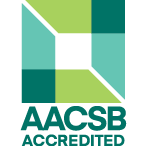
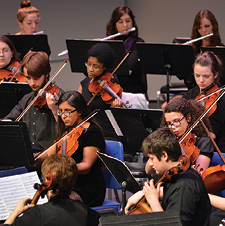

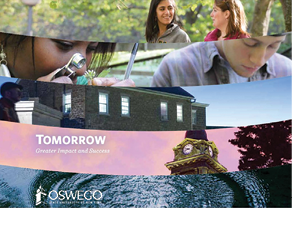
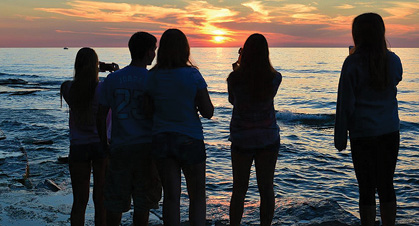

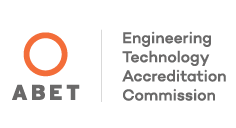
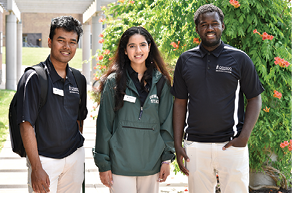

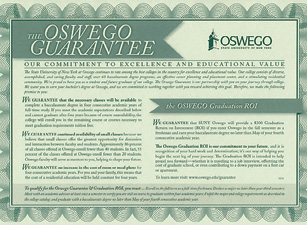
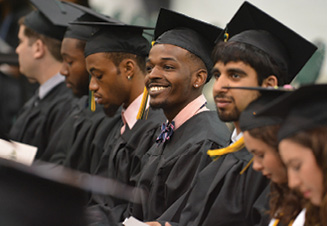

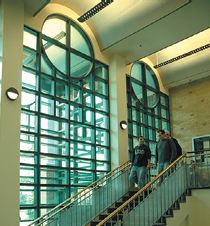

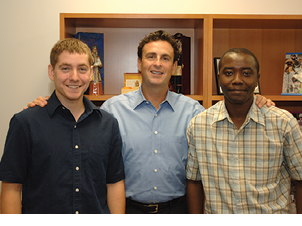
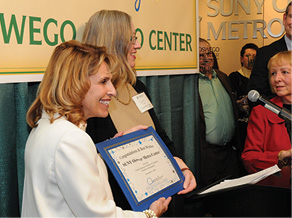

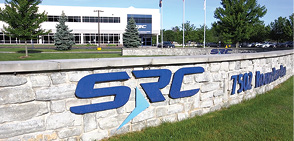
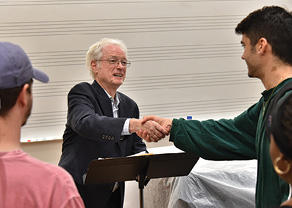


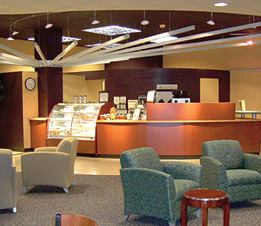
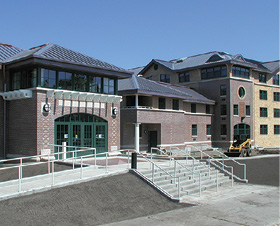
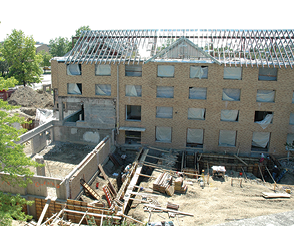
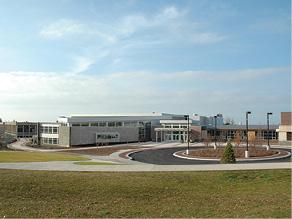
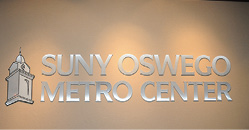
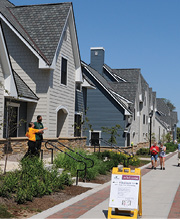

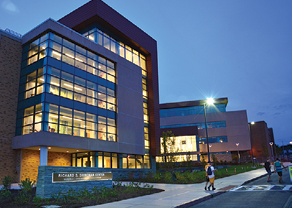
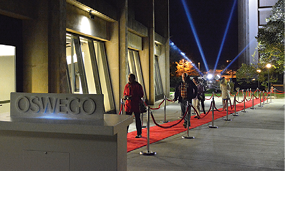
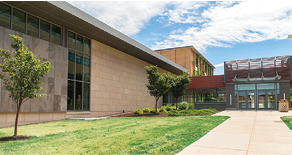
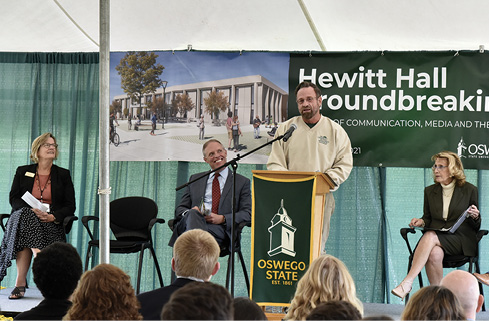
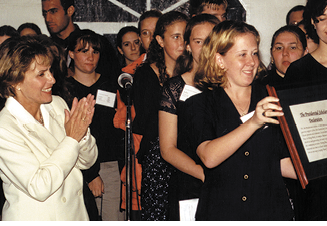
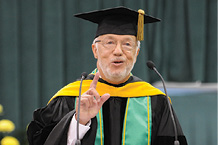


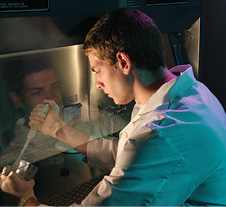
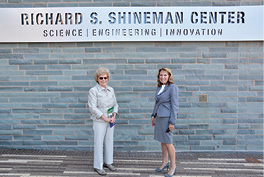
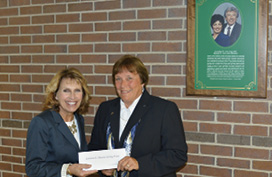
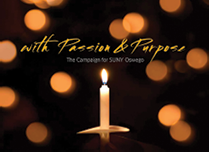
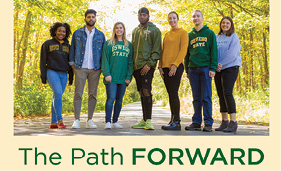


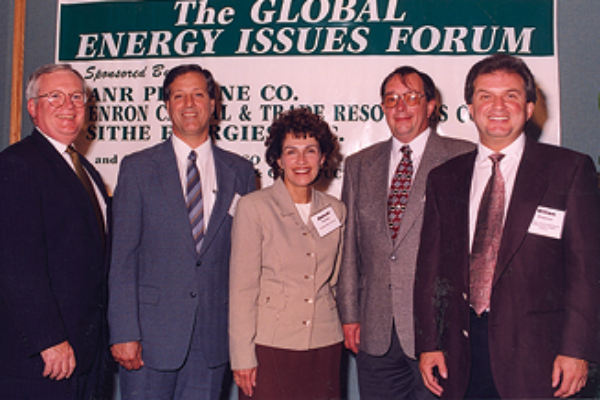
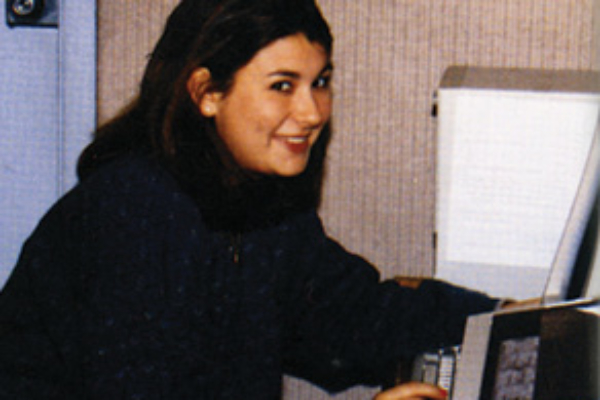




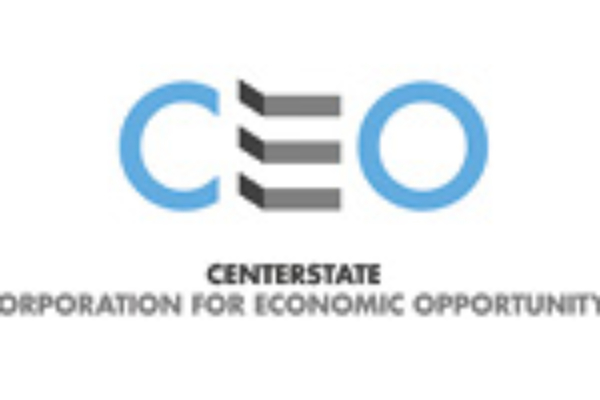
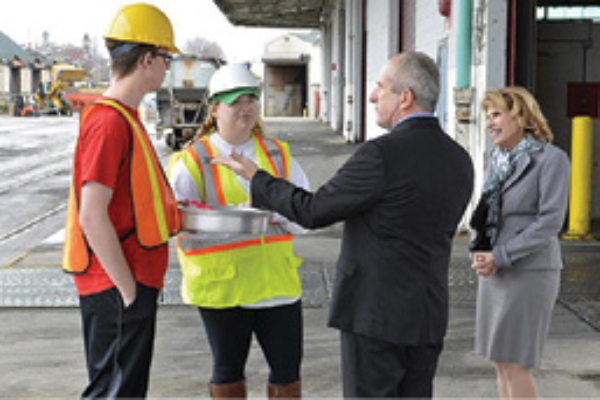
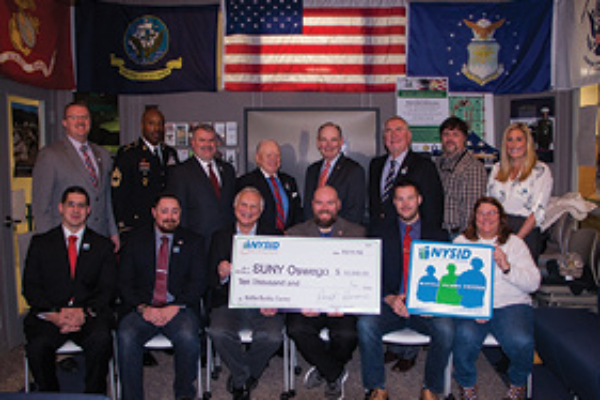
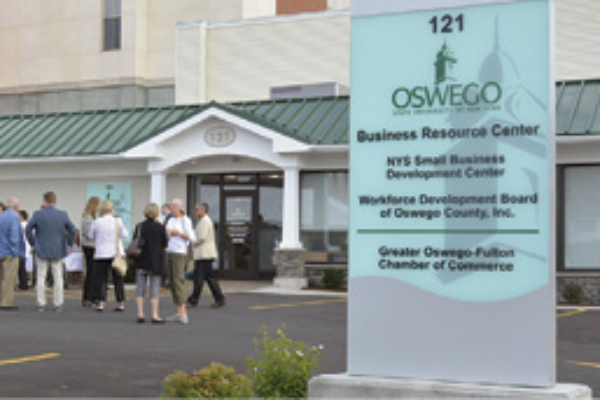
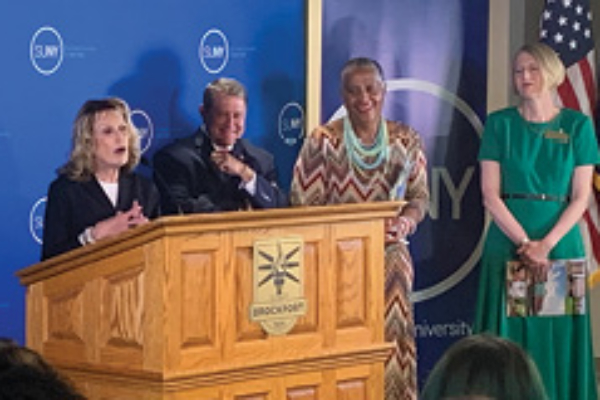
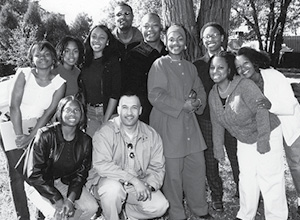

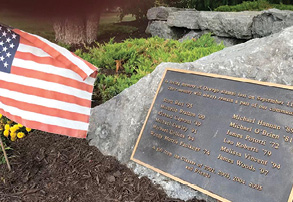
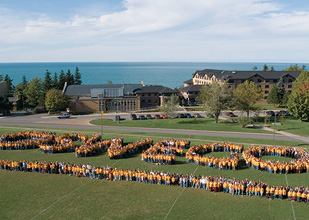
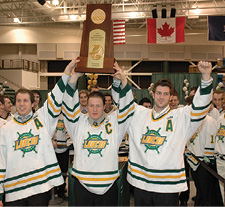

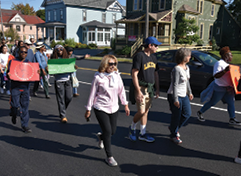
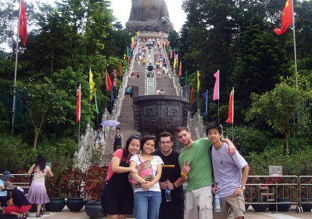

![Pg31_togetherness-diversity-symbol-1339268212_4167x4167_[Converted]](https://magazine.oswego.edu/wp-content/uploads/2022/01/Pg31_togetherness-diversity-symbol-1339268212_4167x4167_Converted.png)
